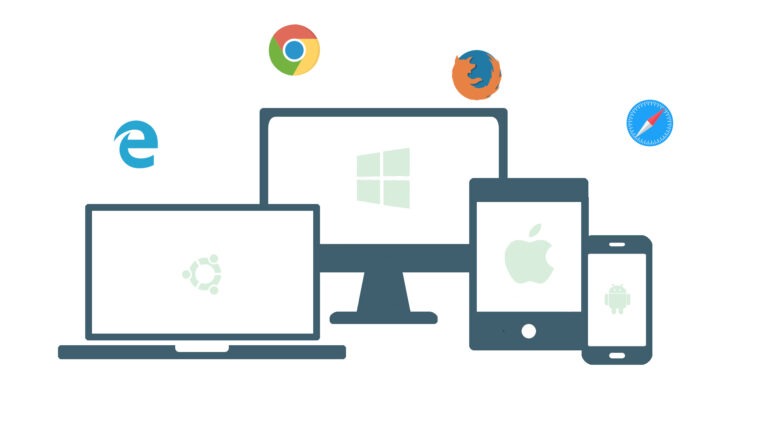Table of Contents
ToggleLooking for a technique to increase the effectiveness of cross-browser testing for an app you’re working on? Continue reading to find out how to release quicker quality updates within a limited time. Cross-browser testing is a time-consuming process when performed manually. And that’s the time you don’t have to waste, and instead, invest that time to increase the efficiency of mobile app testing. To increase the effectiveness of their cross-browser testing, teams are redirecting their efforts to automated testing.
What is Cross Browser Testing?
The cross-browser testing method implies that the functionality of your website or web application is evaluated on various browsers and inversions. The main goal is to provide a uniform, top-class user experience irrespective of any specific browser that has been utilized to navigate through the app.
Currently, we have so many different browsers and devices that the testing is highly complicated. The variety of ways through which web applications can be accessed means that testing needs to be carried out across multiple browsers and device compositions.
Cross-browser testing provides extensive test coverage as the main benefit for mobile app testing. In this way, it assists testers in finding and resolving possible browser compatibility difficulties, which could otherwise compromise user experience.
Nonetheless, it isn’t very easy that various testing scripts have to be created for various browsers before running tests with respect to every individual mixture. This is a meticulous approach that has been undertaken to ensure that the application operates without glitches in different ports of entry, diverse devices, and many browser types. That’s actually a very cumbersome and expensive process for the organization’s management, which is required throughout the procedure.
However, this should not stop you from conducting cross-browser testing. This is indeed not an impossible thing, and it is no vain pursuit. Conversely, one can improve on streamlining cross-browser and device tests. To overcome the issues of resources, the team shall automate the process using non-code tools.
Benefits of Automated Cross-Browser Tests
The widespread adoption of automation can be attributed mainly to its potential for time-saving and efficiency. The same approach can be applied in the field of cross-browser testing. However, if you need to test the performance of your web apps on a selection of OSs, devices and browsers using automation? One of the best ways to explore vital parts and locate bugs in web applications is through manual cross-browser testing, particularly on a small scale.
However, as the need arises to assess your web application across an extensive array of browser and device combinations numbering in the thousands, justifying the time and resources required for manual testing becomes an insurmountable challenge.
In contrast, automated cross-browser testing presents a more accessible alternative to manual testing because it enables users to replicate consistent test cases. Nonetheless, the primary objective of automated testing is to expedite the testing process, and this is not always achieved through code-based automation. Testers often find themselves entangled in the intricate maintenance of scripted test cases, which can be rather time-consuming.
So, how can businesses fully leverage the potential of automation without burdening themselves with an escalating maintenance workload?
Various no-code/ low-code automation tools have revolutionized the testing process by eliminating the complexities associated with coding. Instead, it employs visual and intuitive building blocks to automate test cases across various browsers and platforms.
Efficient Cross-Browser Testing Strategies
- Prioritize Browsers: Not all browsers were created uniformly, and the market share also differs by region. Test browsers that most people in your demography use first. Using tools such as Google Analytics, you can see which browsers are being used on your site.
- Version Compatibility: Testing only on a single browser is not adequate for testing; instead, testing should be performed on different versions of each browser. Ensure that you test on the latest and older versions because newer versions can also introduce bugs.
- Parallel Testing: Using many computing devices to run tests at a time will significantly reduce the duration of tests. There are a number of different test automated testing frameworksthat allow you to run tests across several browsers concurrently.
- Headless Testing: There are specific browsers, such as Chrome, with headless mode where you can perform the testing without an obvious user interface. Headless testing saves time and resources by running test scenarios quickly.
- Cloud Testing Services: Cross-browser testing is made simpler through cloud-based testing platforms. Such platforms are quite convenient as they give a lot of combinations of browsers and OS options, thus making it redundant to keep the large local testing environment.
- Responsive Design Testing: Cross-browser testing also includes verifying that the look and feel of your app does not vary on different screens, sizes and resolutions. Perform device and viewport responsive design testing using various tools.
- Continuous Integration: Ensure every code change triggers cross-browser tests in a CI/CD pipeline. This helps in detecting bugs early thereby, reducing the time wasted when dealing with bugs in production.
Conclusion
Web and mobile applications have to run smoothly and without any problems in different browsers. Today’s world of information requires automated testing frameworks. It is possible to cut down the whole testing time significantly, expand test coverage and detect high-impact bugs if appropriate utilities are used, and an appropriate testing approach is followed.
Add cross-browser testing in the pipeline of your development, prioritize the browsers on their respective version, employ cloud testing service, if need be, and make sure every test is sustainable and robustly built. This way, you will be able to give out a top-notch web app that pleases all types of browsers. Remember, the digital world keeps changing, and if you want your business to succeed, it is vital to keep up with new technology, which will help you win a place in the rapidly evolving Internet world.




